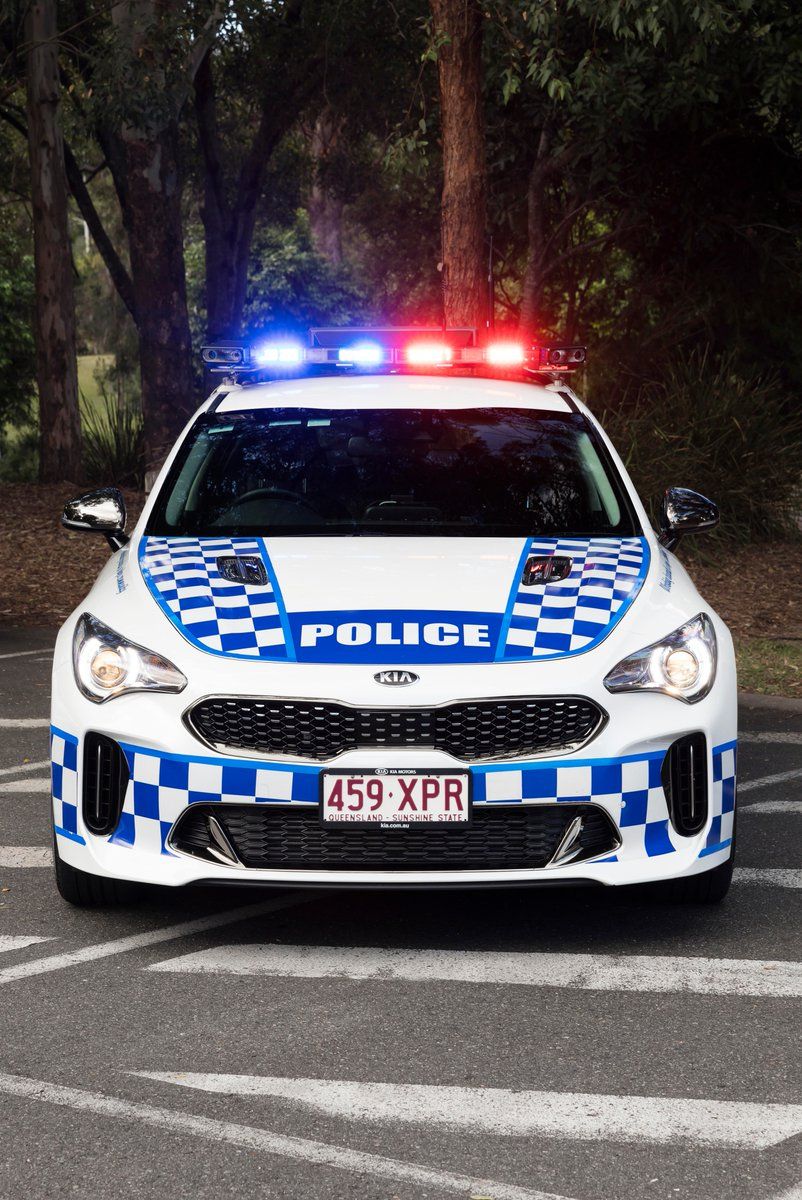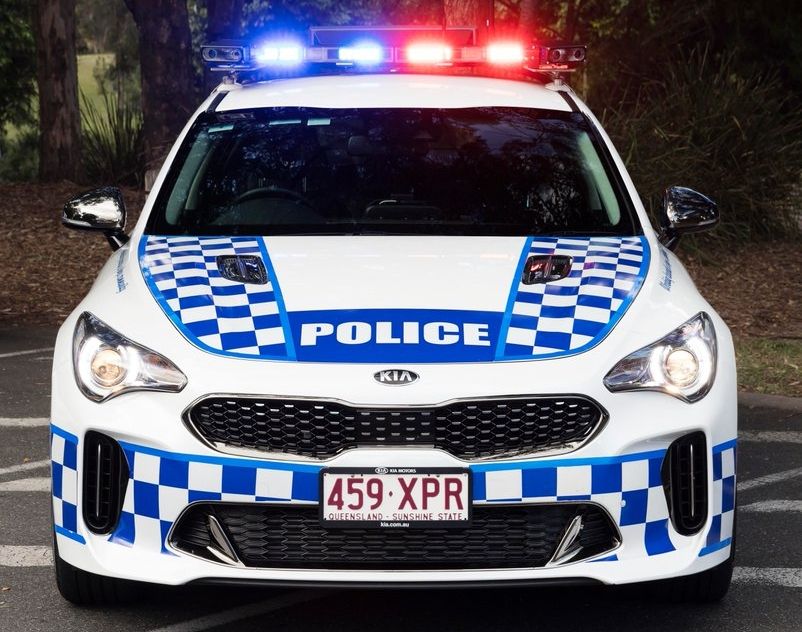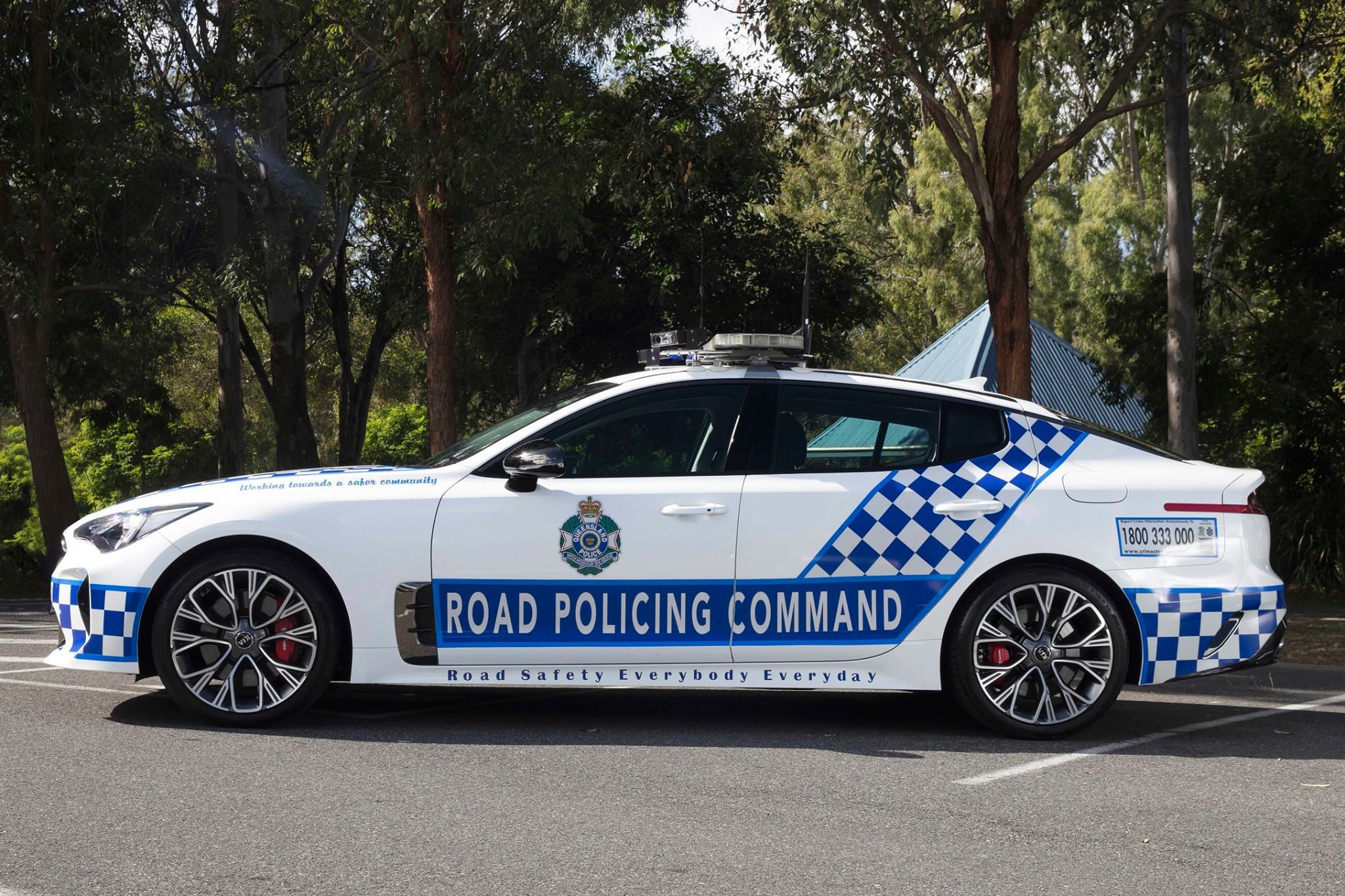It looks like the automakers and law enforcers are equally serious about each other now. We recently saw Ford with the first ever pursuit-rated hybrid SUV, and now, the Australian Police Department has acquired a fleet of Kia Stingers for highway patrolling. The Fleet is set to replace the Ford Falcons and the Holden Commodores in the PD's. One-fourth of the 200 cars have already started patrolling the streets of Queensland, and the rest will be added in the near future.
What Do They Have To Say?
When asked about the decision to choose the Kia Stinger for the police force fleet, Police minister Mark Ryan said, "It was not a big step at all once we had begun the investigation process. Reading what the experts had to say, and seeing how efficiently the Stinger was changing minds and perceptions once people had been exposed to it... it was not a difficult decision. You often hear police ministers talking about providing the best equipment for those at the coal face. In this case, I truly believe we have been able to do that."
Not A Cake Walk For Sure
This doesn’t mean the Stinger was given a green signal right away. It went through desktop evaluation, followed by a track performance assessment, and then an operational evaluation conducted under "real-world" conditions. Getting inducted into the government fleet was a big deal for Kia as well since they replaced the Holdens and the Fords, who’ve been sitting on the throne for decades now. "This level of public exposure and endorsement from a high-profile government utility is something which wouldn’t have been on the radar just a few years ago," said Damien Meredith, Kia Motors Australia’s COO.
About The Car
The Stinger patrol vehicle gets a 3.3-liter, biturbo, V-6 that sends power to the rear wheels, and generates 365 horses and 376 pound-feet of torque. It can go from naught to 60 miles per hour in 4.7 seconds and can attain a top speed of 167 mph! This will Sting the rule-breakers hard. The Kia sedans will also get a lightbar on the roof, and police graphics – blue and white decals - on the body.
Kia Stinger Drivetrain and Performance Specifications
Drivetrain Specifications
|
Stinger |
GT |
|
|
Engine |
2.0L Twin Scroll Turbo 4-Cyl |
3.3L Twin Turbo V6 |
|
Displacement (cc) |
1,998 cc |
3,342 cc |
|
Bore x stroke (mm) |
86.0 mm X 86.0 mm |
92.0 mm x 83.8 mm |
|
Compression ratio |
10.0:1 |
10.0:1 |
|
Horsepower |
255 HP @ 6,200 RPM |
365 HP @ 6,000 RPM |
|
Torque |
260 LB-FT @ 1,400-4,000 RPM |
376 LB-FT @ 1,300-4,500 RPM |
|
Curb Weight |
||
|
Minimum RWD |
3,611 lbs. |
3,829 lbs. |
|
Maximum AWD (All Options) |
3,792 lbs. |
4,023 lbs. |
|
Fuel Economy |
||
|
Automatic transmission (RWD), city/highway/combined (mpg) |
22/29/25 |
19/25/21 |
|
Automatic transmission (AWD), city/highway/combined (mpg) |
21/29/24 |
19/25/21 |
Our Take
Kia capitalized on the vacuum very well to snatch the contract from Holden and Ford. One other factor that gave Holden and Ford an edge up until now was the fact that they were locally manufactured. Now that they are not, the Australian Government had no moral obligation to get new cars from these brands itself. While the Stinger may not have been a runaway success worldwide, this news will surely increase its reputation. To make it clear, only the highway patrolling duties have been allotted to Kia Stingers. For the general duties, the Toyota Camry, Kia Sorento, and Hyundai Santa Fe will most likely continue. Now all we need is a fast-and-furious-style, high-speed chase to test the Stinger’s true potential. Vin Diesel and Paul Walker wannabes, are you listening?
References
Read our full review on the 2018 Kia Stinger.
Read our full speculative review on the 2019 Kia Stinger GT Plus.
Read more Kia news.



